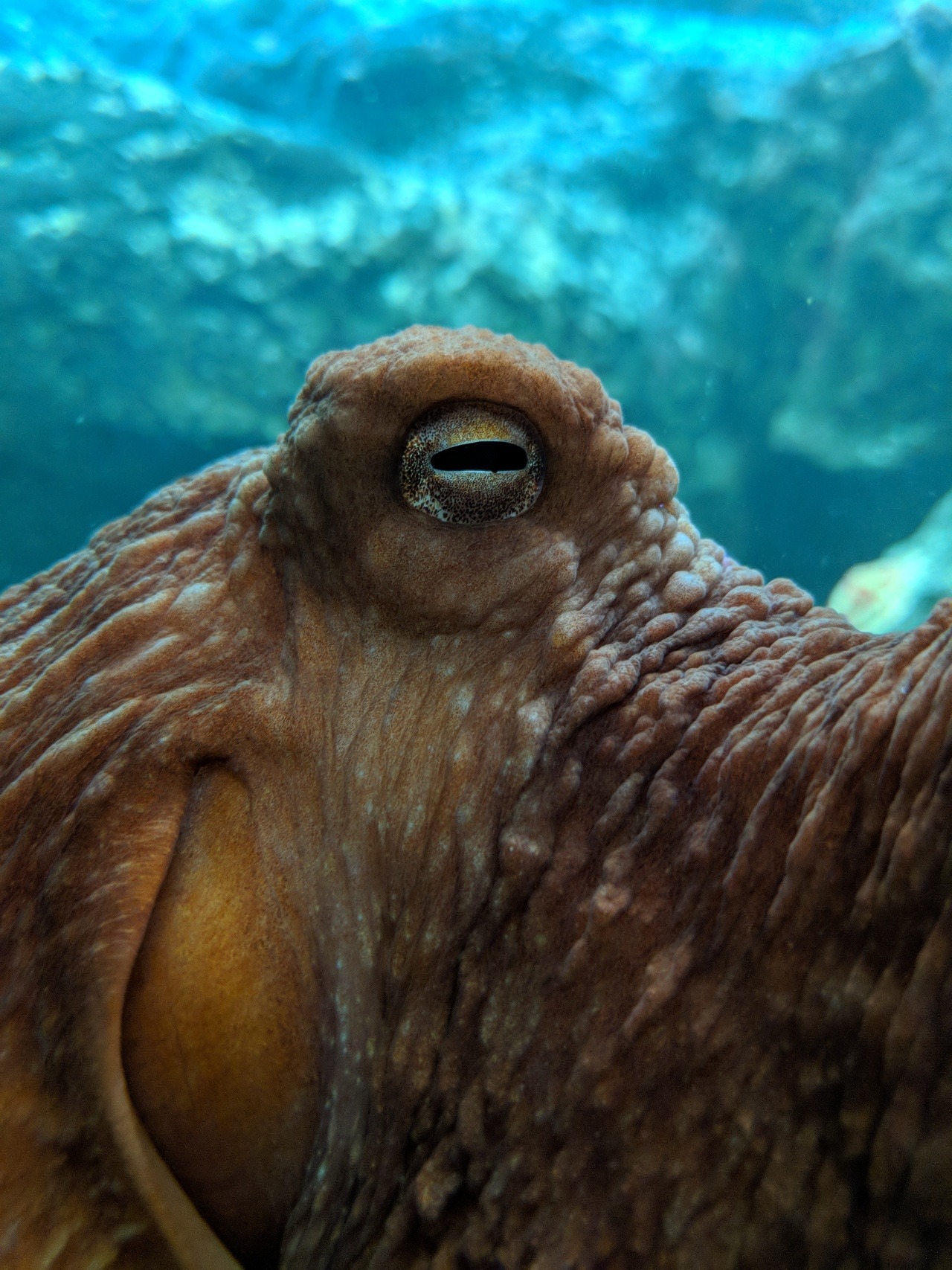

The use their tentacles, suckers (found beneath their tentacles), and funnels to move underwater. The Giant Pacific Octopus lives underwater in the Pacific Ocean, where they usually thrive in temperatures around 8-12 degrees Celsius (they prefer colder waters). According to National Geographic, the largest and heaviest octopus seen was 30 feet in size and 600 pounds in weight!

According to National Geographic, their average size is 9.75 to 16 feet with a weight between 22 to 110 pounds! They’re almost as big as a 6 foot tall human being! Moreover, this species of octopus can lives between 3 to 5 years. The Giant Pacific Octopus is a type of octopus species that is known for their average large sizes, weight and their longer life spans. Another general fact about the octopus is that they have three hearts! One main heart that pumps blue blood throughout the circulatory system, while the other two pumps blood to the gills.

However, due to the beak’s hard material, this acts as a limiter on how small the space that an octopus can occupy (they can only fit in spaces larger than the beak size). According to Alina Bradford, the Giant Pacific Octopus also has a hard beak underneath their bodies which allows them to eat other animals. This allows them to stretch to reach and grab distant objects underwater, or squeeze into tiny spaces. They are invertebrates, which means they have no bones. It does not store any personal data.Just like the other octopuses, the Giant Pacific Octopus has eight limbs, which are attached directly to their head. The cookie is set by the GDPR Cookie Consent plugin and is used to store whether or not user has consented to the use of cookies. The cookie is used to store the user consent for the cookies in the category "Performance". This cookie is set by GDPR Cookie Consent plugin. The cookie is used to store the user consent for the cookies in the category "Other. The cookies is used to store the user consent for the cookies in the category "Necessary". The cookie is set by GDPR cookie consent to record the user consent for the cookies in the category "Functional". The cookie is used to store the user consent for the cookies in the category "Analytics". These cookies ensure basic functionalities and security features of the website, anonymously.

Necessary cookies are absolutely essential for the website to function properly. (2012) Nuclear and mitochondrial markers reveal evidence for genetically segregated cryptic speciation in giant Pacific octopuses from Prince William Sound, Alaska. American Malacological Bulletin 35:134-144 Hollenbeck N and Scheel D (2017) Body Patterns of the Frilled Giant Pacific Octopus, a New Species of Octopus from Prince William Sound, AK. American Malacological Bulletin 35:145–157 Hollenbeck N, Scheel D, Gravley MC, Sage GK, Toussaint R, Talbot SL (2017) Use of Swabs for Sampling Epithelial Cells for Molecular Genetics Analyses in Enteroctopus. Journal of Experimental Marine Biology and Ecology. Scheel D and Bisson L (2012) Movement patterns of giant Pacific octopuses, Enteroctopus dofleini (Wülker, 1910). FAO Species Catalogue for Fishery Purposes. An annotated and illustrated catalogue of cephalopod species known to date. IN Jereb P, Roper CFE, Norman MD, Finn JK (eds) (2014) Cephalopods of the world. (2008), Villanueva R and Norman M (2008), Cosgrove J and McDaniel N (2009), Jorgensen E (2009), Zalygalin V (2009), Barry P et al. Mottet M (1975), Hartwick E (1983), Kubodera T (1992), Hartwick E and Barriga I (1997), Hochberg F (1998), Scheel D (2002), Cosgrove J (2003), Rigby P and Sakurai Y(2004, 2005), Anderson R and Mather J (2007), Anderson R et al.


 0 kommentar(er)
0 kommentar(er)
